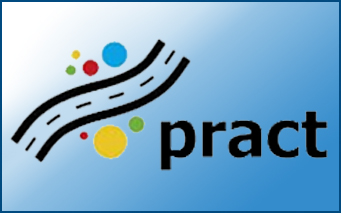Author: agouma
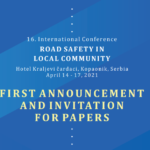
The Road Traffic Safety Agency of Serbia (RTSA) together with several Serbian and international road safety Governmental, Academic and other organisations organised with great success the 16th International conference Road Safety in Local Communities, which was held on April 14 – 17, 2021. 

The Pioneer Alliance together with the NTUA Department of Transportation Planning organised with great success the PIONEERing Solutions for the Smart City Challenge, which was held online on 15 April 2021. Through this Workshop, students had the opportunity to learn about civil engineering for carbon-neutral smart cities, safety, security and risk management, technology enhanced solutions, service design, circular economy and sustainable urban life and tourism.  NTUA actively contributed with the following presentations:
NTUA actively contributed with the following presentations:

The Hellenic Ministry of Infrastructure and Transport proposed the New Mobility and e-scooter Law which has been recently adopted by the Greek Government. This Law sets the framework for the development of Sustainable Urban Mobility Plans (SUMPs), with several provisions for traffic and road infrastructure safety upgrade. Moreover, within this Law, traffic rules for Personal Light Electric Vehicles (e-scooters, etc.) are set for the first time, including compulsory use of helmet and reflective clothing (at night), use of sidewalk for up to 6km/h PLEV design speed (like pedestrians), use of the road for PLEV design speed between 6 and 25km/h (like cyclists) and traffic ban for PLEV design speed higher than 25km/h and on streets with a speed limit of 50km/h or higher. 



The Publications Office of the European Union and the ISA² programme of the European Commission organised with great success the European Data Conference on Reference Data and Semantics (ENDORSE) which was held online on 16-19 March 2021. The Conference created an opportunity to link expertise to tackle current and future issues in the fields of interoperability and knowledge management including aspects of road safety.  NTUA actively contributed with the following presentation from the The Horizon 2020 project BeOpen (European forum and observatory for open science in transport):
NTUA actively contributed with the following presentation from the The Horizon 2020 project BeOpen (European forum and observatory for open science in transport):  FAIR Challenges in Transport Open Science
FAIR Challenges in Transport Open Science

The Institute of Communication & Computer Systems (ICCS) together with the European Technology Platform ALICE organised with great success the 8th International Physical Internet Conference (IPIC 2021) which was held online on 14-16 June 2021. The Conference aimed to provide an open forum for researchers, industry representatives, government officials and citizens to explore leading edge freight transport and logistics concepts, methodologies, projects, technological advancements and start-up initiatives for future interconnected logistics and the Physical Internet. Special sessions’ proposals deadline: 15 April. 


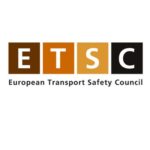
The European Transport Safety Council (ETSC) organised with great success the Road Safety Performance Index Annual Conference and Award Ceremony 2021 (PIN conference) which was held online, on 16 June 2021. In June each year ETSC’s analysis of overall annual progress on tackling road deaths and serious injuries is published in the PIN Annual Report. The PIN conference is also the platform for the presentation of the PIN Award to the best performing country. 


Η ερευνητική ομάδα οδικής ασφάλειας του ΕΜΠ, στο πλαίσιο του έργου i-DREAMS του Horizon 2020, αναζητά οδηγούς στην Αθήνα για να συμμετάσχουν σε πείραμα σε πραγματικές συνθήκες οδήγησης. Στόχος του Πειράματος είναι η παρακολούθηση της ασφάλειας της συμπεριφοράς οδήγησης και η αντίστοιχη ειδοποίηση των οδηγών κατά την οδήγηση αλλά και η ενημέρωσή τους μετά το τέλος του ταξιδιού. Οι οδηγοί θα ωφεληθούν σημαντικά από τη διάγνωση της ασφάλειας της οδήγησής τους και τις σχετικές προτάσεις βελτίωσής της. Όλοι/ες οι συμμετέχοντες/ουσες θα λάβουν δώρα επιβράβευσης και επιπλέον δώρα μετά από διαγωνισμούς και κληρώσεις. Για συμμετοχή στο πείραμα, μπορείτε να συμπληρώσετε το σχετικό έντυπο συμμετοχής. 



The Sustainable Mobility for All Initiative (SuM4All), World Business Council for Sustainable Development (WBCSD), and the International Road Federation (IRF) have launched a Report titled Sustainable Mobility: Policy Making for Data Sharing. The Report draws attention to the need for policy guidance for data sharing between public and private sector stakeholders in the transportation sector. Increasing digitalization of mobility can accelerate the transition toward sustainable urban mobility. 


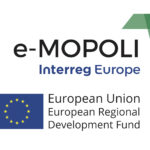
The Region of Attica within the framework of the research project e-MOPOLI of the Interreg Europe program, organised with great success a Workshop on Εlectromobility which was held online on 23 March 2021. The workshop was hosted by the Department of Transportation Planning and Engineering of the NTUA and included presentations of key stakeholders of electromobility in Greece and a round table of experts.  Professor George Yannis opened the workshop with the key outputs of e-MOPOLI project as well as the status and next steps of electromobility in Region of Attica with the following presentation:
Professor George Yannis opened the workshop with the key outputs of e-MOPOLI project as well as the status and next steps of electromobility in Region of Attica with the following presentation:  Interregional Learning Workshop of Region of Attica
Interregional Learning Workshop of Region of Attica

Is Artificial Intelligence the future of road safety?
Artificial Intelligence and Machine Learning techniques are currently used in several road safety related applications, supporting decision making of both the Authorities and the road users and transforming and upgrading significantly the potential for road safety improvement worldwide:
– In vehicle technology, AI algorithms are implemented to exploit computer vision and interpret data provided by RADAR and LIDAR technologies in both traditional and Connected and Automated Vehicles. Today, most car-makers invest seriously in AI.
– In road infrastructure risk prediction, AI applications can transform big data on crash occurrence and road and traffic characteristics from infrastructure sensors into multi-dimension static or dynamic maps of road risk prediction and road star rating. Rotterdam and London are currently among the front-runners.
– In telematics assisted driver behaviour monitoring, AI can exploit big data from vehicles and smartphones to identify risky behaviours like speeding, harsh manoeuvring and distraction and provide customized solutions, including driver behaviour star rating. Fleet safety management and insurance exploit today telematics applications.
A series of highly important opportunities and critical barriers persist today requiring serious effort in order to guide significant changes in road traffic crash prevention and boost road safety globally. An holistic approach is needed tackling all three key areas: Capacity, Knowledge and Governance.
Firstly, the Digital era is bringing today a tremendous higher new Capacity of Big Data, which can be exploited to support road safety. This big data capacity requires serious effort by both Data and Traditional Industries, in order to be properly transformed into useful road safety analysis tools and targeted and efficient solutions, which were impossible in the past. On that purpose, specific data contents and data flow restructuring and adjustments are needed, transforming road safety data from bi-product to core activity.
Secondly, Artificial Intelligence brings a high potential for significant upgrade of Knowledge on road risk, with more accurate information on crash characteristics and the related causalities exploiting new and detailed data on risk exposure and Key Performance Indicators of the road users, the vehicles and the infrastructure. Researchers and Scientists have a key role to evolve towards highly multi-disciplinary approaches combining data, technology and road safety expertise, together with appropriate integration skills to ensure seamless and holistic approaches from data driven problem identification to customized and dynamic highly efficient solutions.
Thirdly, the full exploitation of Artificial Intelligence potential requires appropriate Governance adaptations by both the Industry and the Authorities.
– The Industry should exploit and develop new and innovative business models brought by the continuously growing big data available, but also be ready for key cooperations, especially between data, vehicle, road and insurance industries, and to upgrade the road safety sector with high profits for the industry, the society and the economy.
– Pubic Authorities should exploit the opportunities and facilitate AI road safety applications, by protecting society values, like private data, open data and fair competition on one hand but also supporting change with new rules ensuring the necessary efficiency and flexibility.
Artificial Intelligence is the future of road safety. Coordinated efforts at national and international level, to upgrade capacity, knowledge and governance by the Industry, the Researchers and the Public Authorities can bring highly efficient solutions for safer drivers, safer vehicles and safer roads, making Artificial Intelligence as the catalyst for achieving vision zero road fatalities by 2050.
Contribution at the Round Table of the International Transport Forum on Artificial Intelligence in Road Traffic Crash Prevention, February 2021 
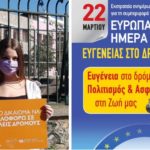
The Road Safety Institute ‘Panos Mylonas’ (RSI) and the Hellenic Institute of Transportation Engineers (HITE) with the support of Hellastron and the Alliance for Safety and Culture on the Road “Roads to the Future”, organised with great success the 14th Pan-Hellenic Road Safety Week during 15-22 March 2021. The aim of this action was to inform, raise awareness and educate all road users (students, parents, teachers, citizens and policy makers) in order to prevent and reduce road accident, which are a scourge on our society. 

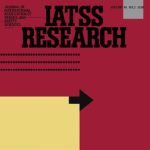
The 42th IATSS Best Paper Award has been awarded to NTUA paper titled “A meta-analysis of the impacts of operating in-vehicle information systems on road safety“, co-authored by Apostolos Ziakopoulos, Athanasios Theofilatos, Eleonora Papadimitriou and George Yannis. The paper aimed to estimate through meta-analysis techniques the overall impact of distraction due to operating in-vehicle information systems (IVIS) and similar devices while driving on road crashes. It was determined that 1.66% of total crashes are caused by operating in-vehicle systems, while the respective proportion is 0.60% when examining professional drivers exclusively. 



The World Bank Global Road Safety Facility (GRSF) has published a Report titled: Road Crash Trauma, Climate Change, Pollution and the Total Costs of Speed: Six graphs that tell the story. The purpose of this Report is to provide information on the relationships relevant to fundamental road transport policies, design, and operation. Well-established evidence shows the importance of managing travel speeds for road safety, for efficiency, for improved inclusion, and for greenhouse gas and other emissions. 


The Horizon 2020 project BeOpen (European forum and observatory for open science in transport), organised with great success the TOPOS Observatory and Forum Webinar which took place on 26 March. The BeOpen partners presented the functionalities of the Transport fOrum/Observatory for Promoting Open Science (TOPOS), which aims to limit existing barriers in Open Science in Transport Research and align transport research with EOSC by following FAIR (Findable, Accessible, Interoperable, Reusable) principles. 
 A short feedback survey on improvement proposals on the current state of TOPOS is now available.
A short feedback survey on improvement proposals on the current state of TOPOS is now available. 

The World Bank Global Road Safety Facility (GRSF), under the new BIGRS Program 2020-2025, hosts the new Speed Management Hub. In this platform, the GRSF team provides evidence-based road safety knowledge to help manage speed through infrastructure interventions, effective enforcement, targeted awareness measures, and vehicle technology, highly useful also for the UN Global Road Safety Week pledge for 30km/h speed limit in urban areas. Key engagements from this focus area include the provision of technical expertise to program partners, countries and cities on speed management and the preparation and publication of Global Speed Management Guidelines. 
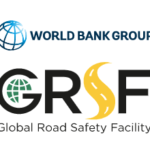
The World Bank Global Road Safety Facility (GRSF) announced the launch of their newly redesigned website: roadsafetyfacility.org. This project provides better access to the use of GRSF research and products will improve guidance and advocacy actions to address the global road safety crisis. Some of the new features of this site are Interactive Road Safety Country Profiles, Speed Management Hub and DRIVER platform. 
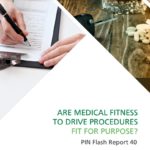
The European Transport Safety Council (ETSC) has recently published the PIN Flash Report 40 titled: Are Medical Fitness to Drive Procedures Fit for Purpose? with the active contribution of NTUA. This Report examines the current state of play in PIN countries regarding the assessment of medical fitness to drive, with reference to the 2006 EU Directive on Driving Licence and recommends that a standardised screening process be considered across all Member States when assessing a driver’s fitness to drive. The process should be based on international best practice and ideally, consistent across all jurisdictions. 

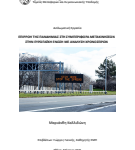
An NTUA Diploma Thesis titled “Impact of pandemic to mobility behavior in the European Union using time-series analysis” was recently presented by Marianthi Kallidoni. This Diploma Thesis revealed that school closing is the most important exogenous factor for describing driving or walking, while the effect of “Stay at home” orders was not a significant factor for the evolution of people movements. In addition, countries which suffered the most due to the pandemic showed a strong correlation with the restrictive measures. Furthermore, no time-series models were found to describe the countries which implemented weak countermeasures. 

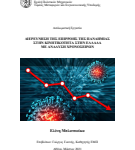
An NTUA Diploma Thesis titled “Investigation of the impact of the COVID-19 pandemic on mobility in Greece using time series analysis” was recently presented by Eleni Blatsouka. Data on mobility and restrictive measures were collected from online databases and ARIMA time series models were developed for Greece and Athens with dependent variables: driving or walking and with exogenous factor one of the restrictive measures. It was demonstrated that the closing of educational institutions and lockdown are the most important exogenous factors for describing mobility, while the curfew and the mandatory use of mask in all public areas are not significant factors. In addition, seasonal models appear to produce better forecasts than the non-seasonal ones. 

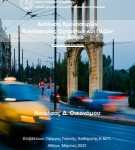
An NTUA Diploma Thesis titled “Time Series Analysis of Vehicle and Pedestrian Traffic in Athens” was recently presented by Nick Economou. The result of this Diploma Thesis is that from summer onwards the forecasted mobility evolution of drivers and pedestrians in Athens Great Area is lower than the observed one, which may be due to summer holidays and high temperatures during summer months in which the prediction was based. Considering the modal split on the examined roads in the center of Athens, it is observed a reduction in the use of passenger vehicles with a simultaneous increase in the use of taxis, which may be due to the adaptation of drivers to the new traffic conditions of the Panepistimiou street brought about by the Athens Great Walk pilot operation. 

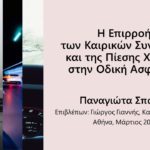
An NTUA Diploma Thesis titled “Impact of weather conditions and rush on road safety” was recently presented by Giota Spanou. Data of 42 young drivers were collected, from a driving simulator experiment with and without any time pressure in good weather conditions, in fog, rain, and snow. Linear and binomial logistic regression models were developed for the mean driving speed, reaction time, headway and accident probability. The application of the mathematical models showed that snow and rain lead to a significant increase in the probability of an accident. Fog increases the accident probability only in the event of a dangerous event and time pressure seems to have the same effects as snow, a fact that should concern drivers. 

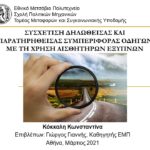
An NTUA Diploma Thesis titled “Correlation of declared and revealed driver behaviour using smartphone sensors” was recently presented by Nadia Kokkali. 19 drivers naturalistic driving data were collected through the OSeven smartphone application and the respective questionnaire. Two regression poisson statistical models were developed, indicating that driving experience, driver age, number of injury accidents in which the driver was involved, vehicle age, fines received by the driver during the last 3 years are all associated with increased harsh events. In most of the cases, a convergence between stated and revealed behaviour was observed. 


The European Transport Safety Council (ETSC) has recently published a Report titled: Road Safety Priorities for the EU: Briefing to Members of the European Parliament. In this briefing, ETSC outlines its recommendations to MEPs on what can be done to reach the new 2030 road safety targets, as input to the European Parliament’s Own Initiative Report on Road Safety. The Road Safety Framework proposes eight new Key Performance Indicators (KPIs) against which EU Member State performance will be analysed to set outcome targets based on the indicators. 


The Fédération Internationale de l’Automobile (FIA) partnership with iRAP’s award-winning Star Rating for Schools (SR4S) programme, delivered the FIA School Assessment Toolkit to identify high-risk schools, establish and conduct safety assessments, communicate results and scale-up outcomes. The Toolkit provides over 30 knowledge documents, guidelines and templates to plan, resource, apply and advocate for school zone improvements that will save children’s lives by delivering a 3-star or better journey to school. 
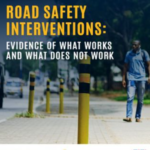
The World Bank Global Road Safety Facility (GRSF) has published a Report titled: Guide for Road Safety Interventions: Evidence of What Works and What Does Not Work. The Guide will help road safety practitioners understand that what sometimes appear to be “common-sense” approaches often not deliver the best road safety outcomes. Although some interventions provide benefits, others have very limited or even negative impacts, despite being commonly—and mistakenly—recommended and adopted. 

The TOPOS Observatory and Forum is now online aiming to limit existing barriers in Open Science in Transport Research and align transport research with European Open Science Cloud (EOSC) by following the FAIR principles (Findability, Accessibility, Interoperability, and Reusability). It is one of the main results of the BeOpen project funded by the European Commission Horizon 2020 Programme. TOPOS Observatory is a tool for advance search on open transportation data and publications, including road safety, supporting also the exchange ideas and sharing best practices for operationalising Open Science principles in transport research. 
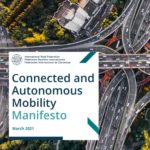
The International Road Federation (IRF) published recently the Connected and Autonomous Mobility Manifesto, with the active contribution of NTUA. The main objective of this Manifesto is to provide the basis for discussion to proactively prepare ourselves for the revolution that Connected and Autonomous Vehicles (CAV) bring to the mobility and transport sector. The Manifesto summarises the initial discussions about the key challenges of the main workstreams guiding the IRF Connected and Autonomous Mobility Committee (CAMC) work, including the regulatory framework, technological innovations, future developments and social needs. 

The International Road Federation (IRF) organised with great success the 18th World Meeting & Exhibition, which took place in Dubai World Trade Center on 7-10 November 2021, under the theme Roads to Tomorrow: Innovative & Sustainable Solutions. This Meeting was a global summit & technology showcase that is both uniquely relevant to a wide cross-section of road mobility stakeholders, and focused on delivering solutions to the world’s pressing mobility questions.  NTUA actively contributed with the following presentation:
NTUA actively contributed with the following presentation:

Global Road Safety Facility (GRSF) of the World Bank is the host of the new Speed Management Hub, under the new BIGRS Program 2020-2025. In this Platform, the GRSF team provides evidence-based road safety knowledge to help manage speed through infrastructure interventions, effective enforcement, targeted awareness measures, and vehicle technology. Key engagements from this focus area include the provision of technical expertise to program partners, countries and cities, on speed management and the preparation and publication of Global Speed Management Guidelines. 

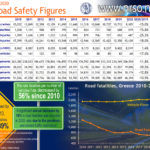
Road fatalities in Greece in 2020 presented a significant decrease (16%) compared to 2019 figures, according to recently published ELSTAT data. This significant decrease is mainly attributed to the traffic restrictions due to the pandemic.
During the last decade, Greece presented the most impressive road safety improvement in the European Union, with a decrease of 54% in road fatalities since 2010, achieving its target of halving road fatalities in 2020 compared to 2010. Serious injuries were reduced by 72% and the rate fatalities per vehicles was decreased by 56% since 2010. 


















































































